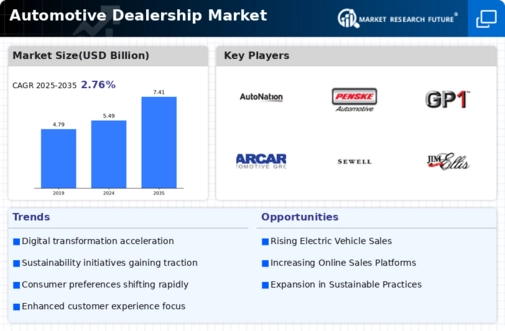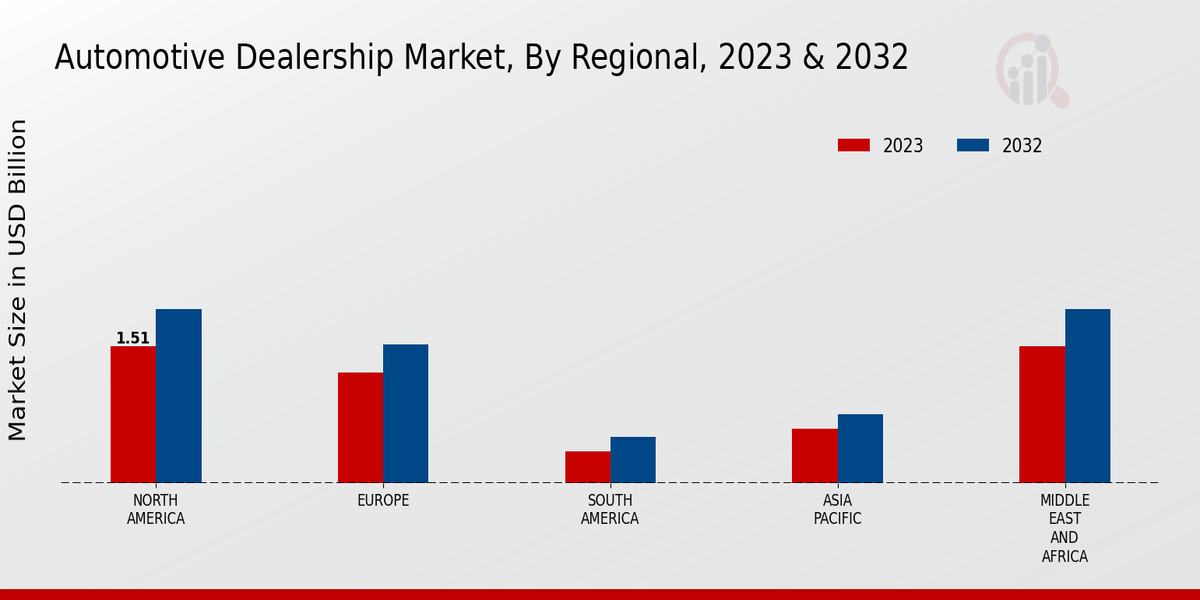Economic Factors
Economic factors are intricately linked to the dynamics of the Global Automotive Dealership Market Industry. Economic growth, consumer confidence, and disposable income levels directly influence vehicle sales and dealership performance. In periods of economic expansion, consumers are more inclined to invest in new vehicles, thereby boosting dealership revenues. Conversely, economic downturns can lead to reduced sales and tighter margins. As the global economy continues to recover and grow, dealerships that strategically position themselves to capitalize on improving economic conditions may see enhanced profitability and market share in the coming years.
Regulatory Changes
Regulatory changes are playing a pivotal role in shaping the Global Automotive Dealership Market Industry. Governments worldwide are implementing stricter emissions standards and promoting electric vehicle adoption, which compels dealerships to adapt their inventories and sales strategies. For example, in many regions, incentives for electric vehicle purchases are driving consumer interest, prompting dealerships to enhance their electric vehicle offerings. This shift not only aligns with environmental goals but also opens new revenue streams for dealerships. As the industry navigates these regulatory landscapes, the ability to comply with evolving standards will be crucial for maintaining competitiveness in the market.
Consumer Preferences
Shifts in consumer preferences are significantly influencing the Global Automotive Dealership Market Industry. Today's consumers increasingly prioritize convenience and personalized experiences, leading to a rise in demand for online purchasing options and virtual showrooms. Dealerships that adapt to these preferences by offering seamless online transactions and tailored services are likely to thrive. This trend is underscored by the increasing number of consumers who prefer to conduct research and finalize purchases online. As the market evolves, dealerships that embrace these changes may capture a larger share of the projected growth, with an anticipated CAGR of 2.76% from 2025 to 2035.
Market Consolidation
Market consolidation is a notable trend within the Global Automotive Dealership Market Industry. As competition intensifies, smaller dealerships are increasingly merging or being acquired by larger entities to enhance operational efficiencies and expand market reach. This consolidation allows for better resource allocation, improved bargaining power with manufacturers, and the ability to invest in advanced technologies. The trend suggests a shift towards fewer, but larger, dealership networks that can leverage economies of scale. As this consolidation continues, it may reshape the competitive landscape, influencing pricing strategies and customer service approaches across the industry.
Market Growth Projections
The Global Automotive Dealership Market Industry is projected to experience steady growth over the next decade. With an estimated market value of 5.49 USD Billion in 2024, it is anticipated to reach 7.41 USD Billion by 2035. This growth trajectory indicates a compound annual growth rate (CAGR) of 2.76% from 2025 to 2035. Such projections reflect the industry's resilience and adaptability in the face of evolving consumer demands and technological advancements. The anticipated growth underscores the importance of strategic planning and investment in innovation for dealerships aiming to thrive in this competitive landscape.
Technological Advancements
The Global Automotive Dealership Market Industry is experiencing a transformative phase due to rapid technological advancements. Innovations such as digital retailing platforms and advanced customer relationship management systems are reshaping how dealerships operate. For instance, the integration of artificial intelligence in inventory management allows dealerships to optimize stock levels and reduce costs. Additionally, the rise of online sales channels has enabled dealerships to reach a broader audience, enhancing customer engagement. As a result, the market is projected to grow from 5.49 USD Billion in 2024 to 7.41 USD Billion by 2035, reflecting a growing reliance on technology in the automotive sector.













